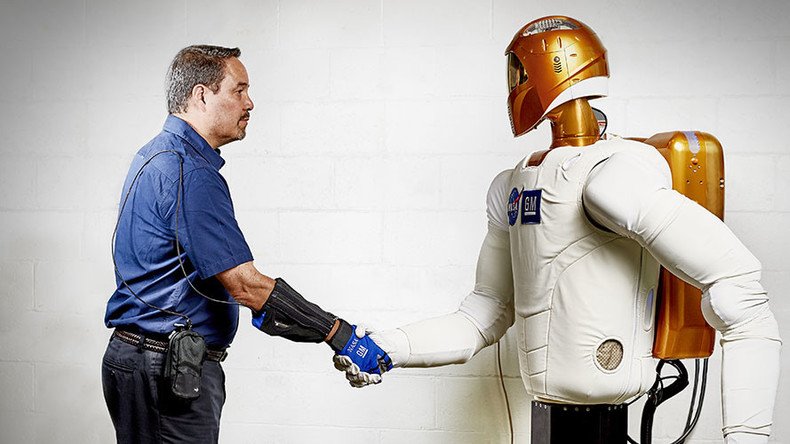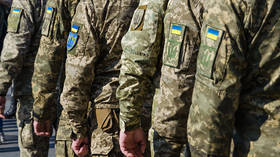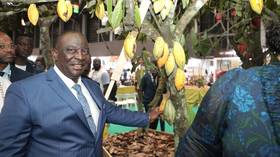The power of glove: GM & NASA create robotic helping hand to fight fatigue (VIDEO)

Assembly line and construction workers of the future could be given a robotic helping hand when it comes to fighting fatigue with a set of new ‘power’ gloves, which developers believe could soon be mass produced.
The battery-powered RoboGlove derives from a NASA-General Motors collaboration that, in 2011, yielded the Robonaut 2 (R2). The weight-lifting humanoid was created to carry out heavy duty work alongside astronauts on the International Space Station (ISS).
At a live demonstration in 2012, Robonaut 2 project leader Dr. Ron Diftler presented the highly dexterous cyborg lifting dumbbells and picking up an envelope in a “human-like fashion.”
R2’s fingertip sensors and reinforced tendons are now being amalgamated by General Motors into a more advanced version of the wearable tech.
An announcement by the manufacturer that Swedish firm Bioservo has been brought on board to contribute its patented ‘grip-strengthening’ technology suggests the product is one step closer to realization.
According to General Motors, the Nordic medical tech company will bring to the table Soft Extra Muscle (SEM) mechanics ‒ used in a Bioservo glove to increase hand strength in stroke victims and people with high-intensity occupations.
“Bioservo will initially develop a new grasp assist device for industrial use that could increase human operator efficiency while reducing fatigue in hand muscles. Research shows fatigue can occur within a few minutes of continuously gripping a tool,” GM said in a statement.
READ MORE: Brain-linked prosthetic arm scheduled to hit markets by year’s end
Bioservo CEO Tomas Ward said the new partnership could herald the use of the technology on an “industrial scale.” However, a date for full-scale production has yet to be announced.
General Motors plans to test the refined RoboGlove at some of its plants, meaning factory workers could soon resemble a character out of an Iron Man film.













